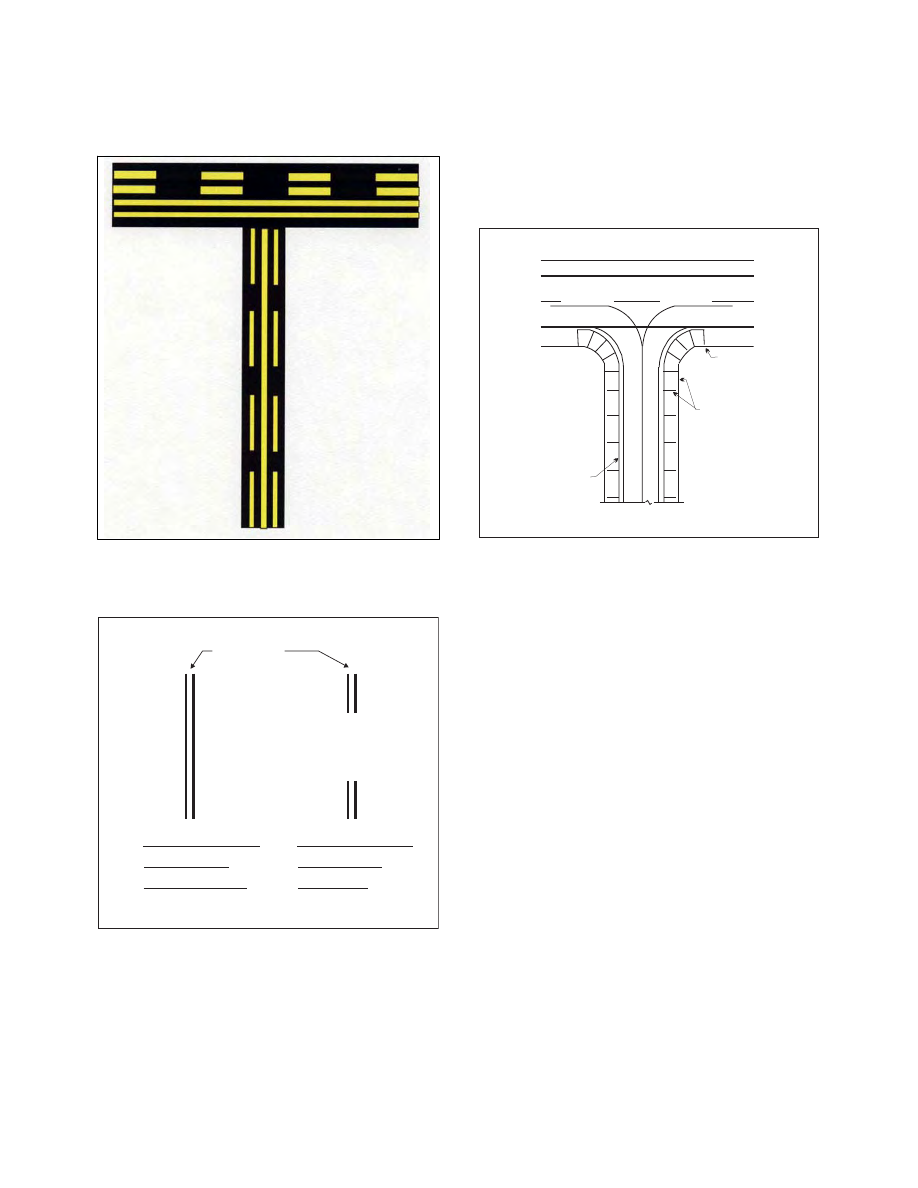
AIM
4/3/14
2−3−10
Airport Marking Aids and Signs
FIG 2
−3−8
Enhanced Taxiway Centerline
FIG 2
−3−9
Dashed Markings
DOUBLE
YELLOW
LINES
TAXIWAY EDGE
MARKINGS
CONTINUOUS
TAXIWAY EDGE
MARKINGS
DASHED
e. Surface Painted Taxiway Direction
Signs.
Surface painted taxiway direction signs have
a yellow background with a black inscription, and are
provided when it is not possible to provide taxiway
direction signs at intersections, or when necessary to
supplement such signs. These markings are located
adjacent to the centerline with signs indicating turns
to the left being on the left side of the taxiway
centerline and signs indicating turns to the right being
on the right side of the centerline. (See FIG 2−3−11.)
FIG 2
−3−10
Taxi Shoulder Markings
YELLOW STRIPES
PAVEMENT EDGE
TAXIWAY EDGE
MARKINGS
RUNWAY
f. Surface Painted Location Signs.
Surface
painted location signs have a black background with
a yellow inscription. When necessary, these markings
are used to supplement location signs located along
side the taxiway and assist the pilot in confirming the
designation of the taxiway on which the aircraft is
located. These markings are located on the right side
of the centerline. (See FIG 2−3−11.)
g. Geographic Position Markings.
These mark-
ings are located at points along low visibility taxi
routes designated in the airport’s Surface Movement
Guidance Control System (SMGCS) plan. They are
used to identify the location of taxiing aircraft during
low visibility operations. Low visibility operations
are those that occur when the runway visible
range (RVR) is below 1200 feet(360m). They are
positioned to the left of the taxiway centerline in the
direction of taxiing. (See FIG 2−3−12.) The
geographic position marking is a circle comprised of
an outer black ring contiguous to a white ring with a
pink circle in the middle. When installed on asphalt
or other dark-colored pavements, the white ring and
the black ring are reversed, i.e., the white ring
becomes the outer ring and the black ring becomes the
inner ring. It is designated with either a number or a
number and letter. The number corresponds to the
consecutive position of the marking on the route.